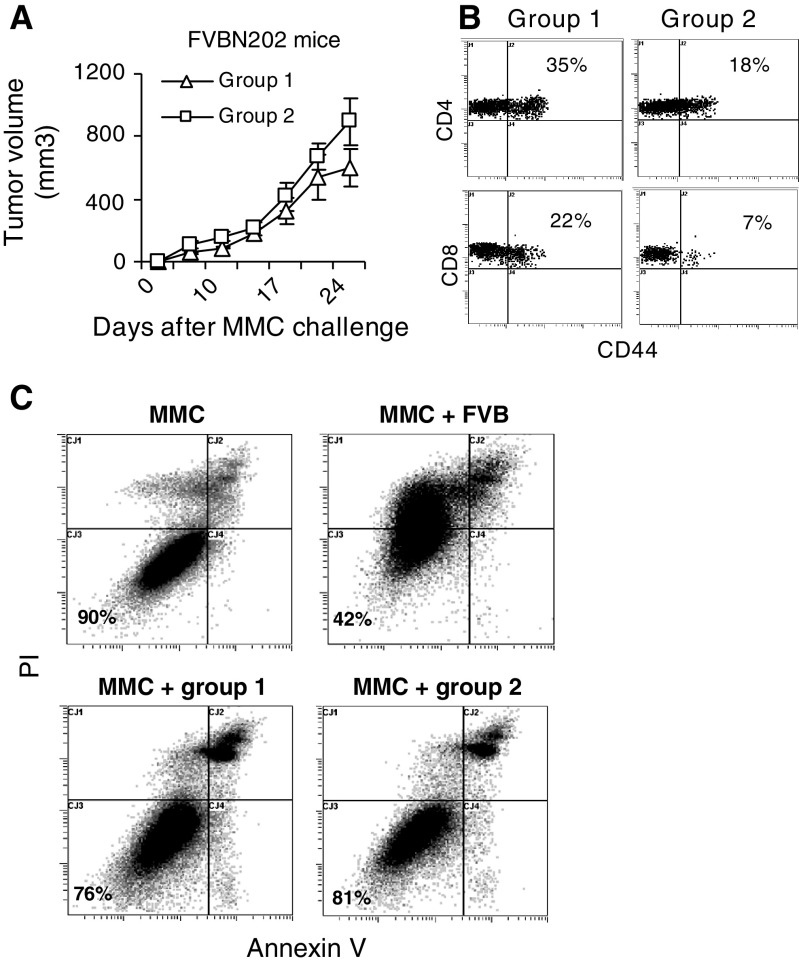Fig. 2.
Presence of pre-existing immune responses against the neu self protein cannot protect animals against challenge with the neu-overexpressing MMC. a Age-matched FVBN202 mice (3–8 months of age; n = 3) with (group 1) or without (group 2) pre-existing IgG1 Ab responses against the neu self protein were challenged s.c. with MMC (4 × 106 cells/mouse). Tumors were measured once every 3 days using digital caliper; b Blood were drawn 17 days post challenge and were subjected to flow cytometry analysis. Data were analyzed within gated lymphocyte regions. Percent effector T cells (CD44+) were then analyzed on gated CD4+CD62L- and CD8+CD62L-channels. Representative data are presented from three mice per group; c Above-mentioned groups were killed 25 days after MMC challenge and their splenocytes were cultured with MMC (E:T at 10:1) in the presence of 20 U/ml IL-2 for 48 h. Splenocytes from the parental FVB mice were used as positive control in an in vitro cytotoxicity assay. MMC in the absence of splenocytes was used as negative control. MMC target cells were then stained with annexin V, PI, and neu-specific Ab and subjected to flow cytometry analysis to detect T cell-induced apoptosis. Neu positive cells were gated and analyzed for early apoptotic (annexin V+), late apoptotic (annexin V+/PI+), and necrotic (PI+) cells. MMC was also cultured in the presence of medium to detect spontaneous apoptosis. Representative data from triplicate experiments are presented for each group

